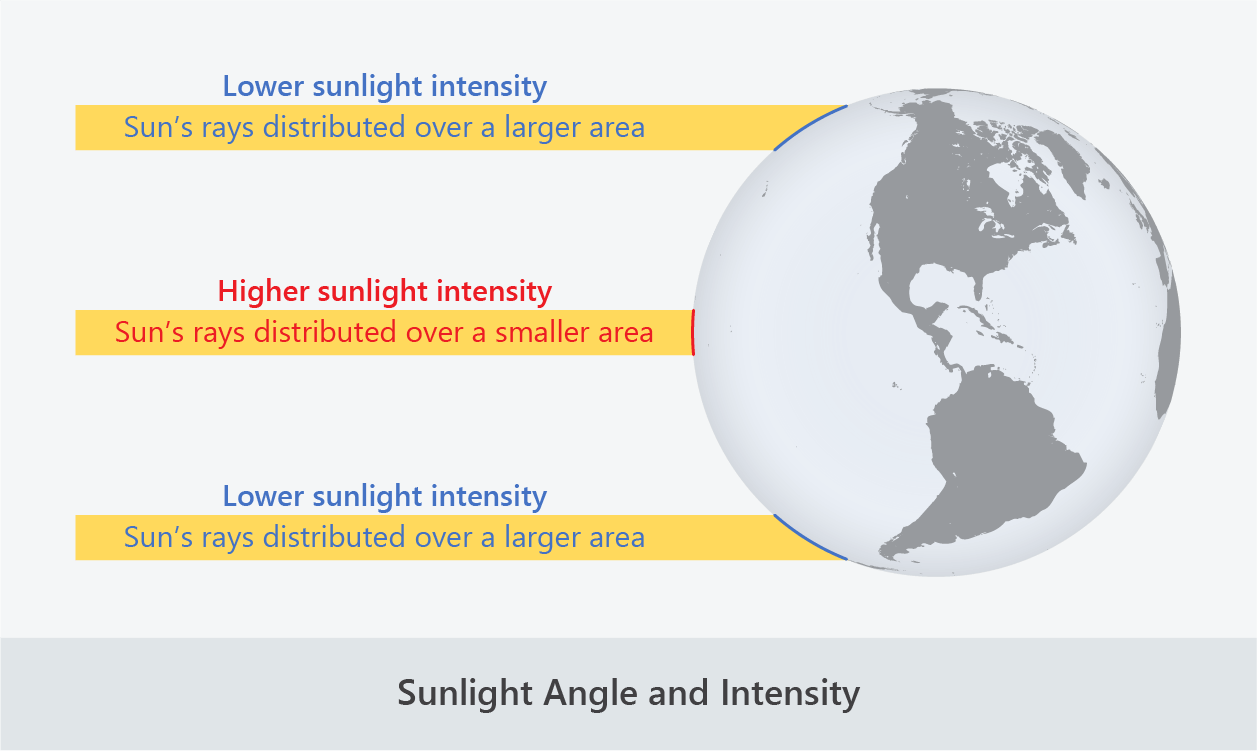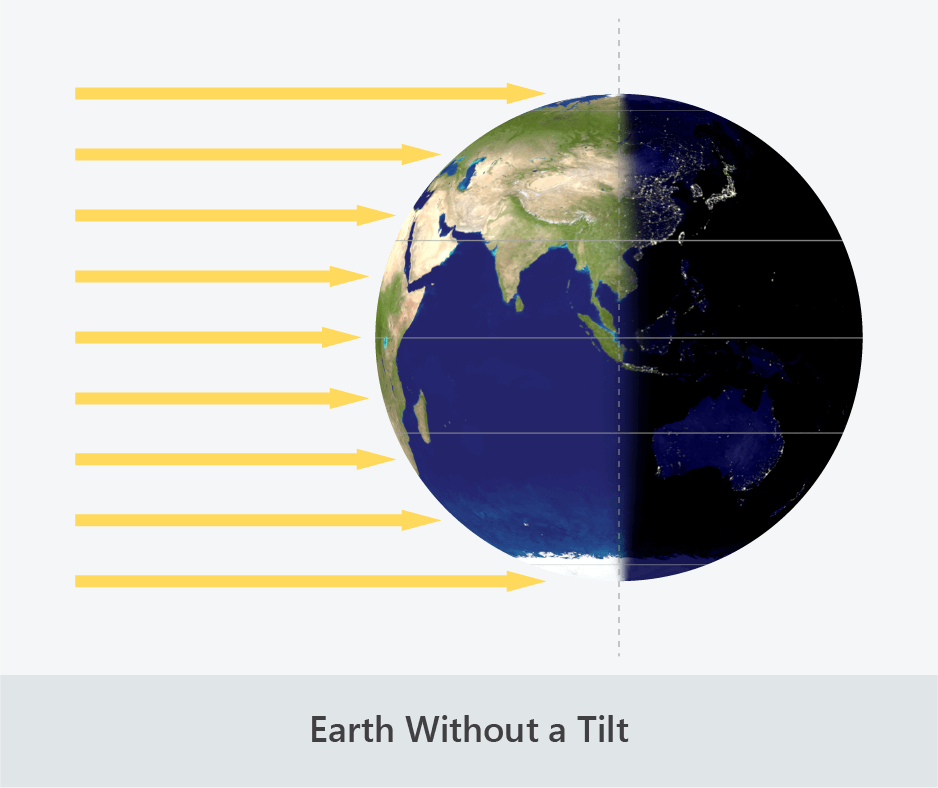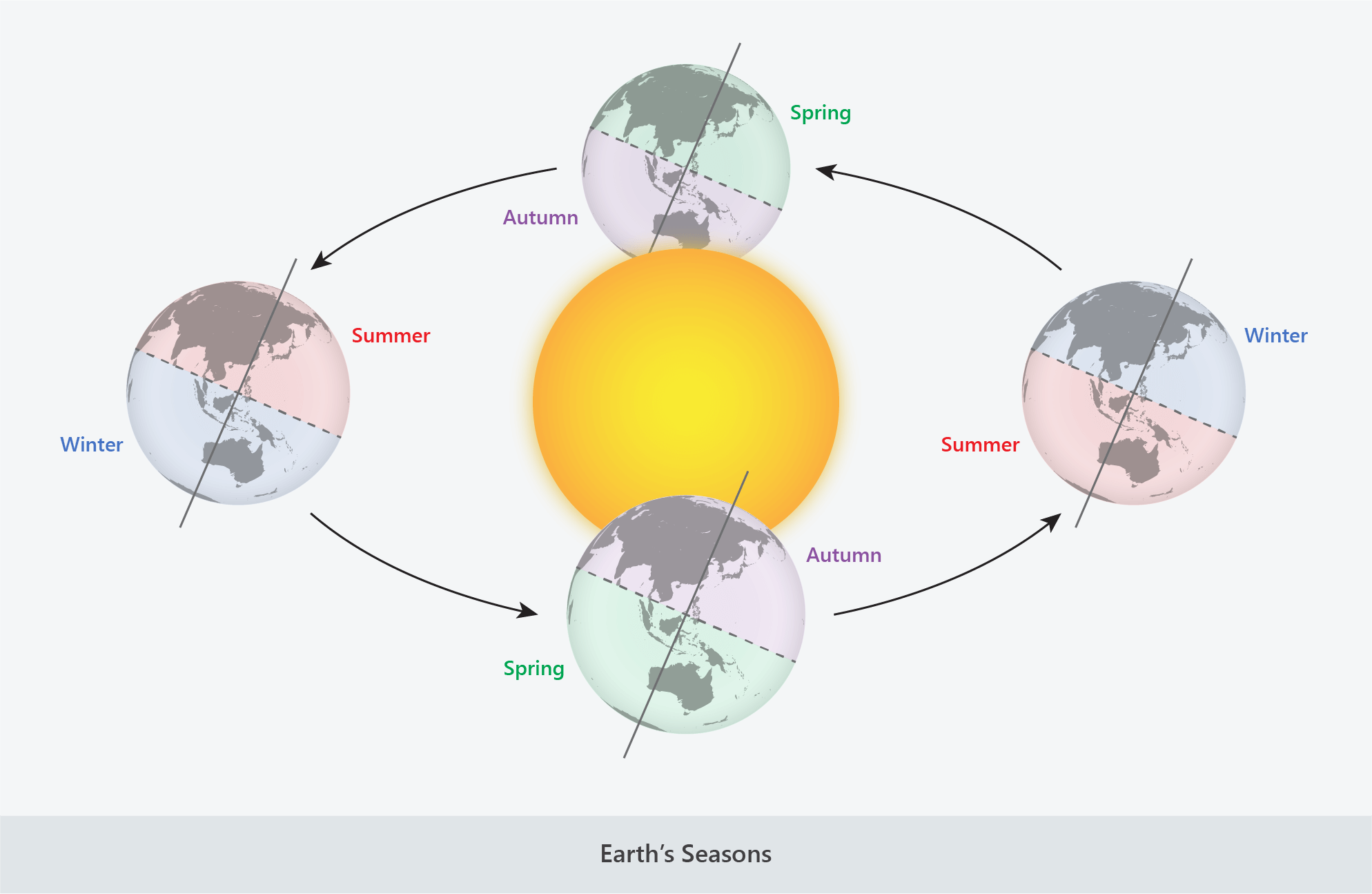4 | The Seasons
The Seasons
Sunlight Intensity and the Curvature of the Earth
- Since Earth’s surface is curved, the intensity of sunlight varies depending on how directly a particular point on Earth is facing the sun.
- The more directly an area is facing the sun, the more concentrated the sun’s rays and the more heat energy that is absorbed.
- The diagram below shows how the sun’s rays are more concentrated (distributed over a smaller area) on parts of the Earth that are facing the sun more directly.

Since Earth’s surface is curved, the intensity of sunlight varies depending on how directly an area is facing the sun.
Sunlight Energy and Earth’s Tilt
- If the Earth’s axis was not tilted:
- The amount of sunlight energy that an area received would not change throughout the year, because:
- The angle of sunlight – and therefore the sun’s intensity – would not change.
- The amount of daylight would remain the same (12 hours of daylight for everywhere on Earth), as the sun would rise and set at the same time each day.
- Both hemispheres would receive the same amount of sunlight energy at all times.
- As a consequence, there would be no seasons.
- However, because the Earth’s axis is tilted:
- The amount of sunlight energy that an area receives changes throughout the year, because:
- The angle of sunlight – and therefore the sun’s intensity – is always changing.
- The amount of daylight is always changing, as the sun rises and sets at different times each day.
- One hemisphere is always receiving more sunlight energy than the other.
- As a consequence, there are seasons and these seasons are the opposite for the two hemispheres.

If the Earth’s axis was not titled, there would be no seasons.
(Image: Commons sibi, Wikimedia Commons)
Seasons and the Hemispheres
- When the northern hemisphere is tilted towards the sun (June – August):
- It is summer in the northern hemisphere.
- It is winter in the southern hemisphere.
- When the southern hemisphere is tilted towards the sun (December – February):
- It is summer in the southern hemisphere.
- It is winter in the northern hemisphere.
- Autumn occurs between summer and winter (September – November in the northern hemisphere and March – May in the southern hemisphere).
- Spring occurs between winter and summer (March – May in the northern hemisphere and September – November in the southern hemisphere).
- During autumn and spring the Earth’s tilt is perpendicular to the sun.

Earth’s tilt as it orbits the suns results in the seasons.
The seasons are the opposite for the two hemispheres.
The Seasons and Day Length
- The seasons are also affected by day length.
- Days are longer in summer, further increasing the amount of sunlight energy absorbed.
- Days are shorter in winter, further decreasing the amount of sunlight energy absorbed.
- Due to the time taken for heat energy to be absorbed and lost, there is a time lag between daylight hours and the seasons.
- The middle of summer is a few weeks after the longest day of the year.
- The middle of winter is a few weeks after the shortest day of the year.


Days are longer in summer and shorter in winter.
(Images: ivanko80, Adobe Stock; MNStudio, Adobe Stock)
Quizzes

